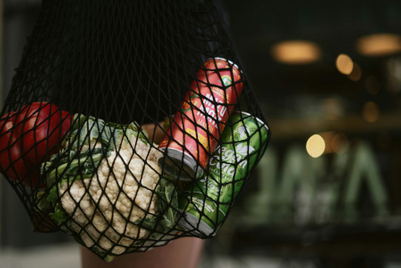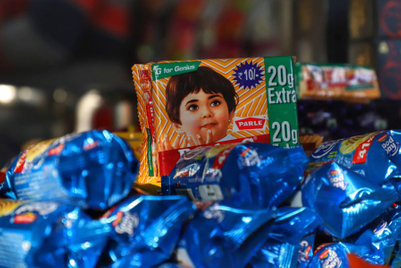.jpg&h=570&w=855&q=100&v=20250320&c=1)
India's fast-moving consumer goods (FMCG) industry continues to show resilience in the third quarter of 2024, driven by steady value growth and a notable upswing in rural consumption. According to the latest report by NielsenIQ (NIQ), rural markets have consistently outpaced urban ones in consumption-driven value growth, marking a key shift in FMCG dynamics across the country.
The FMCG Quarterly Snapshot for Q3 2024, released by NielsenIQ, reveals that the industry experienced a 5.7% growth in overall value, bolstered by a modest 1.5% rise in prices and a 4.1% increase in volume. Notably, rural value growth reached 6.7%, surpassing urban growth of 5.0%—a trend that has persisted for three consecutive quarters, highlighting the growing significance of rural demand in the FMCG sector.
Roosevelt Dsouza, head of commercial for India at NielsenIQ, commented on the resilience of the industry, noting, “The Indian FMCG industry shows resilience with steady value growth and marginal price increase. Rural volume growth at 6% continues to surpass urban markets, despite softer consumption in both regions this quarter. Small manufacturers are rebounding after recent decline, while major players trail in value growth.”
Shifts in consumption patterns highlight market resilience
The latest data from NielsenIQ indicates that rural areas have become the primary driver of consumption growth in the FMCG sector. This is a reversal of previous trends where urban centres led growth.
During the third quarter of 2024, rural consumption growth reached 6.0%, nearly doubling the urban growth rate of 2.8%. Additionally, traditional trade volumes grew by 4.1% in Q3, up from 3.0% in the previous quarter, underscoring rural consumers’ increasing demand for FMCG products.

This shift suggests that brands will need to further adapt their strategies to accommodate rural market dynamics, which are currently driving the broader market's performance. The consistent outperformance of rural areas reflects consumer resilience and points to the potential for continued growth in these regions, especially as FMCG brands expand their reach.
The report also highlights varying growth patterns across different FMCG categories, with food and staples leading the recovery in Q3. Food consumption volume increased to 3.4%, up from 2.1% in Q2.
Staples such as edible oils, packaged atta (wheat flour), and spices saw notable growth, driven by a combination of rising demand and moderate price increases. Meanwhile, the home and personal care (HPC) segment showed stable consumption growth at 6.0% in Q3, compared to 6.7% in the previous quarter, with both rural and urban areas contributing to this stability.

For over-the-counter (OTC) products, including rubefacients and analgesics, value sales surged by 11.7% in Q3, supported by price growth. This reflects a heightened focus on health-related products, particularly in rural areas, where access to medical facilities may be more limited, further boosting demand for OTC options.
Strong performance of small manufacturers
In terms of market players, smaller manufacturers have outperformed larger FMCG giants in recent quarters. After three quarters of declining consumption, smaller manufacturers have made a strong recovery, driven in large part by increased demand in the food segment. Giants, on the other hand, have exhibited slower value growth and saw a decline in volume growth compared to the previous quarter, a sign that smaller players are finding traction in specific categories and segments.
This resurgence among smaller companies reflects the shifting dynamics within India’s FMCG market. As rural consumption rises, smaller brands appear to be better positioned to capture growth in specific product categories, especially where local preferences play a significant role. For larger players, this could signal the need for renewed focus on rural markets and tailored strategies to maintain competitive positioning.
NielsenIQ’s report underscores the importance of regional tailoring for FMCG brands in India, where consumption patterns can vary significantly between rural and urban markets. To succeed, brands will need to invest in understanding these local preferences and creating targeted marketing, product offerings, and distribution strategies. This may involve strengthening relationships with local influencers, increasing availability in traditional trade channels, and ensuring that products meet the specific needs of rural consumers.
For brands, trust and reliability are becoming increasingly essential in building consumer loyalty. By aligning products and campaigns with the unique preferences of rural and urban customers, companies can enhance brand recognition and foster consumer trust. Additionally, testimonials and endorsements from rural influencers and community figures can help bolster brand credibility in these markets.
A balancing act between urban and rural markets
The latest figures suggest that rural areas will remain crucial to the growth of India’s FMCG industry in the coming quarters. With demand continuing to rise in these areas, brands are likely to increase their focus on rural consumers while balancing their efforts across urban markets.
The stabilisation in categories such as home and personal care and the increased demand for food staples indicate that brands need to be adaptable, particularly as the festive season approaches—a period that traditionally drives consumption across all segments.
As brands work to capture the diverse Indian market, NielsenIQ’s report highlights the need for a differentiated approach that accommodates the unique demands of rural and urban consumers alike. The ability to blend local knowledge with a broader strategy will likely determine which players emerge strongest in India’s competitive FMCG landscape.


.jpg&h=334&w=500&q=100&v=20250320&c=1)
.jpg&h=334&w=500&q=100&v=20250320&c=1)
.jpg&h=334&w=500&q=100&v=20250320&c=1)




.jpg&h=334&w=500&q=100&v=20250320&c=1)







.jpg&h=268&w=401&q=100&v=20250320&c=1)


